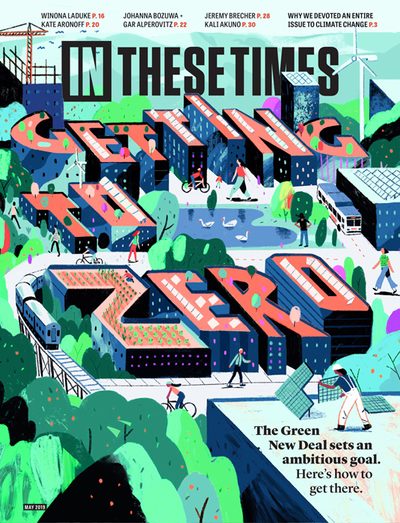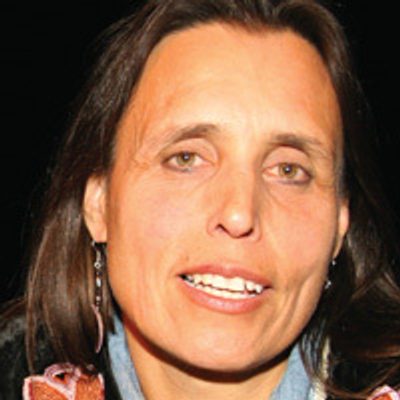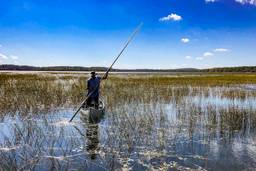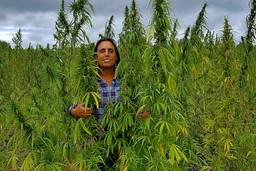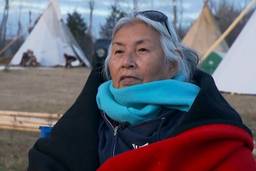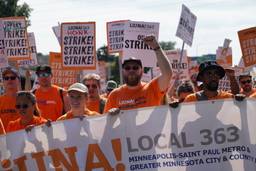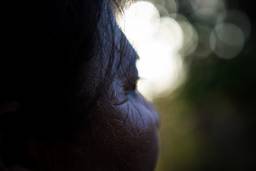How To Build the Zero-Carbon Economy
The Green New Deal sets an ambitious goal. Here’s how to get there.
Winona LaDuke

The Anishinaabe people have a prophecy that a time will come when we have to choose between two paths: one scorched, one green. For those who choose the green path, a more peaceful era will follow — known as the Eighth Fire — in which the Anishinaabeg will return to our teaching of Mino Bimaatisiiwin, the Good Life. Mino Bimaatisiiwin is based on reciprocity, affirmation and reverence for the laws of Nature — quite a different value system from that of the Gross National Product.
How to ensure we make the right choice is the art of now. As Dakota philosopher and poet John Trudell often says, first you have to “keep the beast out of the garden.” I refer to the beast that’s destroying our collective garden as Wiindigo (cannibal) economics — the practice of extracting every last bit of oil just because you’ve got the technology to do it, ecosystems be damned.
Killing Wiindigo economics is doable, but it will be a big job. We must work with the determination of people who actually intend to survive, and we must find the Achilles’ heels of the current system. For inspiration, look to the roughly $8 trillion moving out of the fossil fuel industry thanks to global divestment campaigns. Look to the social movements emerging as water protectors block “Black Snakes” — that is, oil pipelines. Enbridge’s Line 3 pipeline is another year behind schedule while renewable energy moves ahead.
So, what’s next?
We need a Green New Deal — or as I prefer to call it, a Sitting Bull Plan. As Sitting Bull once said, “Let us put our minds together to see what kind of future we can make for our children.” That’s what’s we need — to put our minds together.
The plan proposed by Rep. Alexandria Ocasio-Cortez (D-N.Y.) and Sen. Ed Markey (D-Mass.) offers the beginning of a new green path. In the pages that follow, writers from the movement put their minds together to chart that path.
In “How To Bury an Industry” [link to piece], journalist Kate Aronoff tells us how to kill the Black Snakes. Currently, the energy sector makes up around 6 percent of U.S. GDP. Enbridge’s Line 3 is just one $2.9 billion hemorrhage, all for a Canadian corporation to get some filthy tar sands oil to bake the planet. Time to get some control over that sector — being an oil addict is a drag.
In “Electric Power to the People” [link to piece], Johanna Bozuwa and Gar Alperovitz tell us to get local on energy. A study in New Jersey suggests that each megawatt of community solar installed generates around $1.8 million of total economic impact during construction, operation and maintenance. Community solar projects allow families, tribal governments and municipalities to combine their efforts to go solar, which allows people who may not have suitable rooftops, or who face financial or regulatory barriers, to access renewable energy. That’s real energy security.
In “The Solution Is Agroecology” [link to piece], Eric Holt-Giménez of Food First reminds us that we have a food overproduction problem. How baffling is it that we waste roughly 40 percent of our food in the United States? A study once found that Chicagoans’ fruits and vegetables travel an average of 1,500 miles from farm to table; we also slather them with fossil fuel-based chemicals, from everything ending with -cide to the plastic packaging. In the meantime, Indigenous nations worldwide are adapting to the times. Through the agroecological techniques Holt-Giménez proposes, we could grow less food, nearer to home, and grow it better. Organic agriculture sequesters carbon and rebuilds top soil — might want to stick with ancient, time-tested wisdom. The carbon needs to be in the soil, not the air.
In “Making It a Good Deal for Workers” [link to piece], Jeremy Brecher of the Labor Network for Sustainability points out that cleaning up this mess will mean jobs. Lots of them. America has a D+ in infrastructure. For every $1 million invested in energy efficiency alone, anywhere from 12 to 20 jobs are created. Restorative economies are full of employment, and a Green New Deal can require fossil fuel companies to invest in them. It’s about making the spoiled children known as American corporations clean up their own messes before they go bankrupt.
In “From Extraction to Regeneration” [link to piece], Kali Akuno of Cooperation Jackson says it’s time to tame your inner Wiindigo. So much of the stuff we produce ends up in a landfill. No time like the present to change that. We need to move from a production chain to a production cycle based on reuse, and start banning plastic straws, bags and all that stuff. And then we figure out how to do this all, better. No way should we be trying to fill our gullets with so much excess; what we need is to be efficient and elegant.
Finally, in “We Broke It, Let’s Fix It” [link to piece], Basav Sen of the Institute for Policy Studies shows we need to look beyond the invisible borders created by colonial powers. I think of this land as Akiing, the land to which the people belong. Those borders make no sense to a storm, a flood or the wind. Climate change is international. We must be, too.
The Anishinaabeg are instructed that in each deliberation, we must consider the impact upon the seventh generation from now. This teaching can guide a life, a social movement and ultimately an economy.
The essential elements of intergenerational equity involve renegotiating and restoring a relationship to ecological systems, to Mother Earth. It’s not just making sure that you can buy a solar cell-phone charger from Amazon. It means a restorative and regenerative economy. It also means justice — from a just transition for workers, to an interspecies, intergenerational and international justice.
The time you kill a Wiindigo is in the summer. When the warmth of the sun returns to the north country. There’s a proverb, “They tried to bury us, but they didn’t know we were seeds.” It’s time to plant the seeds.
